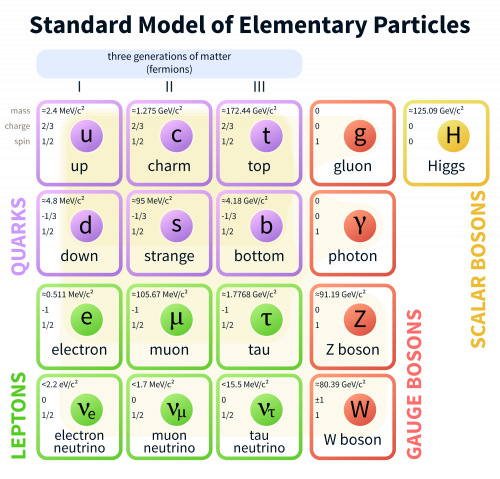The quest to extend physics beyond the Standard Model will take a new turn this February, as an upgraded accelerator at the High Energy Accelerator Research Organization (KEK) in Japan begins its inaugural six-month data collection run. The experiment, dubbed Belle II, builds on observations from other collaborators, including from the Large Hadron Collider beauty (LHCb) experiment at CERN. This new high-precision accelerator will be able to further analyze LHCb results, which deviated from the Standard Model.
The Standard Model of particle physics is, at present, the strongest scientific theory describing the interactions of elementary particles, the fundamental building blocks of matter, under the fundamental forces of nature. Although the Standard Model has been verified by numerous experiments, it fails to account for several fundamental phenomena, one of which is matter-antimatter asymmetry.
In the moments after the Big Bang, the universe was a hot “soup” made of equal parts matter and anti-matter. Matter is the “stuff” that makes up most of the modern universe, while anti-matter is the negative of that “stuff.” Just as every positive integer has a corresponding negative integer, each elementary particle of matter has a corresponding anti-particle. The model makes it impossible to establish an excess of matter over anti-matter, explains Tom Browder, physicist at the University of Hawaii in Manoa and spokesperson for Belle II, the universe today should contain equal amounts of both.
The universe today, however, is clearly majority matter, suggesting that if the Standard Model is correct, there exists some process that creates this imbalance. The Belle II experiment will search for these sources of this imbalance by smashing together electrons and positrons at high speeds. This will create subatomic particles called B-mesons, which then decay into other subatomic particles. The researchers then check whether the decay products match predictions made using the Standard Model. If, for instance, certain particles were produced in higher proportions than expected, it could be evidence of an undiscovered intermediary.
This indirect method for searching for new particles relies on collecting large amounts of collision data. The effects of these intermediaries, Browder says, is akin to that of borrowing and instantaneously repaying an incredibly large loan from the bank. The effects of a single transaction would likely be too subtle to discern. After many repeated transactions, however, the bank’s accountants would begin to notice something strange. Likewise, the effects of these intermediary particles will only be measurable after analyzing numerous decays.
The Belle II collider will squeeze particles into a beam just 50 nanometers across, allowing it to produce 40 times more collisions than its predecessor, KEK. It is also expected to produce cleaner collisions than other colliders like the LHC, which smashes protons into protons. Since protons are made of three elementary particles, LHCb collisions are messy and involve many particle interactions. Electrons and positrons, however, are elementary particles, so Belle II collisions will be much cleaner in comparison.
The Belle II experiment hopes to refine previous results from the LHCb collaboration, which found evidence of deviations from the Standard Model in 2017 but was unable to discern whether they were due to chance. The ultimate goal is to better understand the nature of the universe, and the matter and life within. “There is a deep connection between microscopic physics and our own existence,” Browder said. “As we continue probing the boundaries of the Standard Model, what we find will also teach us about ourselves.”
References
[1] https://www.nature.com/articles/d41586-018-00162-x
[2] https://home.cern/about/physics/standard-model
[3] https://en.wikipedia.org/wiki/Standard_Model
[4] Interview with Tom Browder (University of Hawaii), spokesperson for Belle II
[5] https://www.nature.com/news/physicists-excited-by-latest-lhc-anomaly-1.21865

